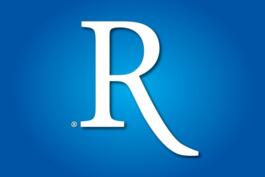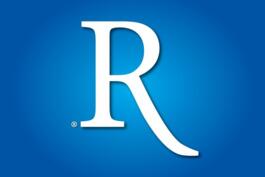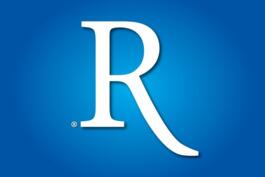Slower Rise in Health Care Spending Is a Big Deal
A Commentary By Froma Harrop
The sky isn't falling. The train is not wrecking. The end is not nigh. And to drag this out a bit, the tidings are not all bad.
The Social Security and Medicare trustees have spoken in their latest annual report: Social Security's not-too-serious condition remains unchanged from last year. But the outlook for Medicare, the more shaky program, has brightened modestly.
The hospital insurance trust fund is now projected to go dry in 2026, two years later than predicted in last year's report. Total spending is still going up as more Americans reach age 65, but not at the expected clip.
This piece of good news is better than it appears. The dagger pointed at America's economic viability hasn't been the existence of government programs like Medicare. It's been the relentless rise in health care costs that plagues not only Medicare and Medicaid, but everyone who uses health care.
Private insurers pass ballooning medical bills to employers through higher premiums. Employers pass these surging costs to their workers through lower paychecks, reduced benefits or both. Soaring health care expenses are a big reason take-home pay has stagnated.
To what do we attribute the moderation in expected Medicare spending? The Affordable Care Act, also known as ObamaCare. It shaves payments to private health plans and some other providers.
What many didn't get about ObamaCare is that bringing coverage to the uninsured was the easy part. Far harder is another goal, curbing the rise of health care costs. All that hollering about a "government takeover of health care" was the medical-industrial complex demanding protection for its gusher of revenues.
The problem, really, is that government hasn't taken over enough of American health care -- certainly where costs are concerned. Medicare and Medicaid do set prices, but the United States is apparently the only industrialized country that doesn't regulate what fee-for-service providers and drug makers may charge.
The crazy economics of American health care are such that a colonoscopy in the U.S. costs an average $1,185, whereas the Swiss pay $655 for the same screening, according to a New York Times report. As you know, Switzerland is hardly the land of the cheap deal.
An angiogram in this country averages $914, which is 26 times what Canadians pay (an average $35). A $124 bottle of Lipitor here costs $6 in New Zealand. And so it goes.
In every category of treatment, drug and scan prices, the United States pays the most, often by far, according to the International Federation of Health Plans. Small wonder that, per person, the United States spends twice the rich country average for health care.
Conservatives are right that consumers might balk at these prices if they actually saw them. Usually they don't, because the insurer pays. But even if patients did see what things cost, how would they respond? It really shouldn't be their job to haggle over price or second-guess their doctor on what tests they should have.
The good part about these shocking numbers is that they also represent low-hanging fruit for savings. For example, colonoscopies were once an office procedure. Now they take place in "surgery centers" with an anesthesiologist present and hospital-type fees tacked on. Many experts think colonoscopies are prescribed too often and that cheaper, less-invasive screenings do as good a job of detecting colon cancer.
As happens in any profession, many health care providers will charge what they can get and load up on services. With the government's help, we won't have to pay like dumb robots. When it comes to Medicare, meanwhile, the question should move away from, "How do we sustain it?" It should be, "What, exactly, are we sustaining?"
COPYRIGHT 2013 THE PROVIDENCE JOURNAL CO.
DISTRIBUTED BY CREATORS.COM
See Other Political Commentary.
See Other Commentaries by Froma Harrop.
Views expressed in this column are those of the author, not those of Rasmussen Reports. Comments about this content should be directed to the author or syndicate.
Rasmussen Reports is a media company specializing in the collection, publication and distribution of public opinion information.
We conduct public opinion polls on a variety of topics to inform our audience on events in the news and other topics of interest. To ensure editorial control and independence, we pay for the polls ourselves and generate revenue through the sale of subscriptions, sponsorships, and advertising. Nightly polling on politics, business and lifestyle topics provides the content to update the Rasmussen Reports web site many times each day. If it's in the news, it's in our polls. Additionally, the data drives a daily update newsletter and various media outlets across the country.
Some information, including the Rasmussen Reports daily Presidential Tracking Poll and commentaries are available for free to the general public. Subscriptions are available for $4.95 a month or 34.95 a year that provide subscribers with exclusive access to more than 20 stories per week on upcoming elections, consumer confidence, and issues that affect us all. For those who are really into the numbers, Platinum Members can review demographic crosstabs and a full history of our data.
To learn more about our methodology, click here.



